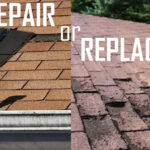A wood-burning fireplace is more than just a source of warmth; it adds charm, creates a cozy ambiance, and can become the heart of your home. The crackling sound of burning logs, the warmth radiating through the room, and the soft glow of firelight can transform any space into a relaxing retreat. However, like any other appliance, a fireplace requires proper care to operate safely and efficiently. Without regular maintenance, your fireplace may not burn as efficiently, resulting in increased smoke, poor air quality, and higher energy costs. Moreover, neglecting maintenance can lead to safety hazards, performance issues, and costly repairs.
If you’ve recently invested in wood-burning fireplace installation or are considering upgrading your existing setup, it’s essential to learn how to maintain it. Proper care ensures you get the most out of your fireplace while keeping your home safe and comfortable. Here’s a comprehensive guide on how to maintain your wood-burning fireplace to ensure that it serves you well for the long term.
Clean Your Chimney Regularly
The chimney is one of the most crucial components of your wood-burning fireplace. Over time, soot, creosote, and other debris can accumulate inside, posing a serious fire risk. Creosote is a highly flammable substance that builds up when wood burns, and if not removed regularly, it can ignite, causing a dangerous chimney fire. To prevent this, it’s essential to have your chimney cleaned at least once a year, ideally before the start of the colder season.
Hiring a professional chimney sweep is recommended, as they have the necessary tools and expertise to clean your chimney thoroughly. A clean chimney ensures proper ventilation and prevents dangerous blockages, helping your fireplace burn more efficiently.
Inspect for Cracks and Damage
It’s important to regularly inspect the fireplace and chimney for cracks or signs of damage. Even small cracks in the masonry or chimney walls can lead to dangerous situations. If these cracks allow heat or smoke to escape, they can cause fire hazards or lead to carbon monoxide poisoning.
Check the firebox (the part of the fireplace where the fire burns) for any cracks in the bricks or the mortar between them. Don’t forget to inspect the chimney liner as well, as a damaged liner can result in dangerous leaks. If you notice any damage, it’s best to call in a professional to repair the issue before it worsens. Early detection can save you from costly repairs down the road.
Check the Damper and Flue
The damper controls the airflow and helps smoke exit your home. If it’s not functioning properly, it could lead to smoke filling the room, creating an unpleasant and dangerous environment. Check that the damper opens and closes smoothly. Look for signs of rust, corrosion, or damage. If you notice any issues, get them repaired right away.
The flue (the chimney pipe) is also important. Blockages like leaves, nests, or debris can prevent proper airflow, causing dangerous conditions. Make sure the flue is clear and open to ensure that smoke and gases can exit your home safely.
Clean the Firebox
Cleaning the firebox is an important part of fireplace maintenance. After each use, ash can build up quickly. While a small amount of ash won’t cause harm, too much can block airflow, making the fire burn inefficiently. Excessive ash can also damage the firebox over time.
- Remove ashes: Once the ashes have cooled, remove them and dispose of them in a fire-safe container.
- Vacuum the firebox: Use a special vacuum designed for fireplaces to remove dust and smaller particles.
- Prevent damage: Regular cleaning helps your fire burn more evenly, maintains a steady heat output, and extends the lifespan of your fireplace.
Use the Right Wood
Not all firewood burns the same way. Hardwoods, such as oak, maple, and hickory, are ideal for a wood-burning fireplace. These types of wood burn longer, produce less smoke, and create less creosote. Softwoods like pine, fir, or spruce burn faster, which leads to more smoke and quicker buildup of creosote inside the chimney.
When choosing firewood, make sure you’re using seasoned wood—wood that has been properly dried. Wet or “green” wood produces more smoke, burns poorly, and leads to more creosote buildup. Avoid burning treated or painted wood, as it can release harmful chemicals and damage your fireplace. Seasoned wood also burns hotter, helping your fireplace generate more heat while minimizing excess smoke.
Ensure Proper Ventilation
Proper ventilation is essential for a safe and efficient fireplace. Without it, smoke could back up into your home, creating an unpleasant and potentially dangerous situation. To maintain good airflow, make sure that the flue is fully open before you light a fire. Check the chimney cap regularly to ensure it is intact and that no debris or animals can enter the chimney.
Also, make sure the area around your fireplace is clean and free from obstructions. This simple step can help improve airflow and increase the overall efficiency of your fireplace. Additionally, always leave the damper open when a fire is burning to allow smoke to exit properly.
Check for Carbon Monoxide Leaks
Carbon monoxide is a colorless, odorless gas that can be deadly in high concentrations. A poorly maintained fireplace or chimney can lead to carbon monoxide leaks in your home. Install carbon monoxide detectors in key areas of your home, especially near the fireplace. Test them regularly to ensure they are working correctly.
If you ever notice that smoke is not venting properly or if you smell something burning, extinguish the fire immediately and check the chimney for leaks. Carbon monoxide can cause serious health issues, so it’s important to take this step seriously. Regular chimney inspections will help you detect any blockages or cracks that could lead to leaks.
Keep the Surrounding Area Safe
Safety is key when using a wood-burning fireplace. Keep the area around the fireplace clear of flammable items like curtains, rugs, and furniture. Make sure the hearth (the floor area in front of the fireplace) is safe and free of any debris.
Using a fireplace screen is a good idea to prevent sparks from flying out and causing a fire. You should also consider using a fireproof mat under the fireplace to protect the floor. Additionally, never leave children or pets unattended near a burning fire, and make sure they understand the safety rules.
Final Thoughts
A wood-burning fireplace can be a beautiful and functional part of your home, providing warmth and a cozy atmosphere. But regular maintenance is essential for ensuring your fireplace works safely and efficiently. By following these simple steps, such as cleaning your chimney, checking for cracks, and using the right wood, you can enjoy the benefits of your fireplace for many years.
Remember, don’t wait for a problem to arise. Schedule your annual chimney cleaning and fireplace inspection now to ensure everything is in working order. Keeping your fireplace clean and safe will help you enjoy the warmth and beauty of your home without worrying about costly repairs or safety hazards.
- How to Maintain Your Wood-Burning Fireplace | Safety & Efficiency Tips
- Learn how to properly maintain your wood-burning fireplace with expert tips on chimney cleaning, ventilation, firewood selection, and safety checks to keep your home warm and safe year-round.
- fireplace maintenance tips, chimney cleaning guide, fireplace installation services, fireplace installation
Related posts:
 Nelson Builders: Your Trusted Partner for Renovations and New Homes in Nelson
Nelson Builders: Your Trusted Partner for Renovations and New Homes in Nelson
 Professional Cleaning Services in Malibu, CA – MLS Roofing & Construction
Professional Cleaning Services in Malibu, CA – MLS Roofing & Construction
 Reliable Roof Installation in Waterford, CT | Brennan Roofing
Reliable Roof Installation in Waterford, CT | Brennan Roofing
 When Is a Contractor License and Bond Legally Required: Hiring Tips
When Is a Contractor License and Bond Legally Required: Hiring Tips
 Roof Repointing vs Roof Replacement: Which Is Right for You?
Roof Repointing vs Roof Replacement: Which Is Right for You?
 Efficient Movers and Packers in Dubai for Stress-Free Relocation
Efficient Movers and Packers in Dubai for Stress-Free Relocation
 24/7 Emergency Plumber Near You – Fast, Reliable & Affordable!
24/7 Emergency Plumber Near You – Fast, Reliable & Affordable!
 Small Bedroom Design/Small Bedroom Tips That Make a Big Impact
Small Bedroom Design/Small Bedroom Tips That Make a Big Impact






